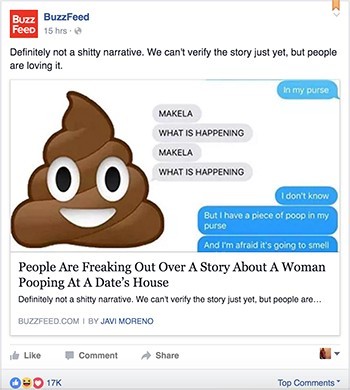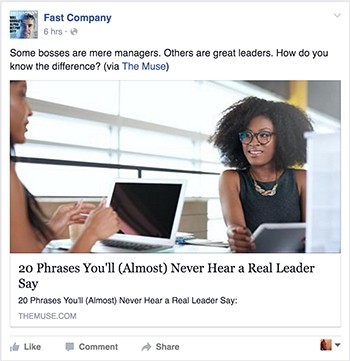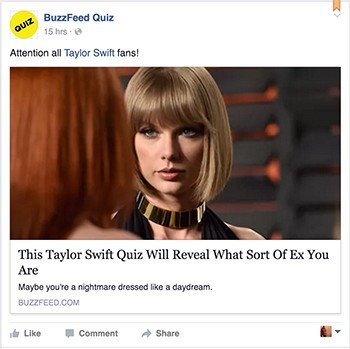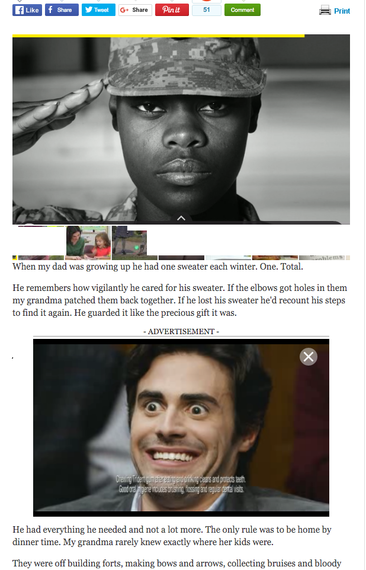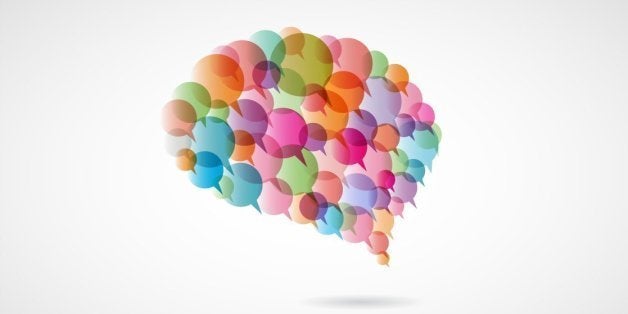
Instagram and the Cult of the Attention Web
I'm disappointed about Instagram's most recent announcement. They'll be shifting their photo feed from a chronological list to an algorithmically driven one, ordered based on which posts they think you will like most. My disappointment is not based in nostalgia or a lament of change. I'm disappointed because the decision is a symptom of a larger problem that is eating the web.
***
Over the past few decades a significant portion of the economy has shifted. Once upon a time companies and services were geared toward enticing you out of your money. Today, the goal of many is to entice you out of your time. Which, in turn, is leveraged as collateral to attract money from advertisers.
Our current version of the internet lives and breathes off a currency of human attention. With the success and failure of many internet companies predicated on how much of a person's time they can capture.
This model has reshaped much of the internet into an "attention web", with companies fighting tooth and nail to own every possible moment of your time.
As laid out in a recent New York Times piece about the Instagram change:
"These companies want to always, always give you the next best thing to look at," said Brian Blau, a vice president at Gartner, an industry research firm. "If an algorithm can give you much more engaging content more frequently, you'll stick around longer."
The more time people spend using Instagram, the more often the company is able to serve people ads.
It's the Faustian bargain we've all struck. In exchange for a "free" web, we give you our time. Unfortunately, this structure is unsustainable and is compromising both our experience of the web and the quality of the things we consume.
***
Time is more precious than money. Money is a renewable resource. Everyone always has the potential to make more money. Time, on the other hand, is finite. There are only so many hours in a day. By definition, you only have so much time to give.
The finite nature of time means that, in the world of the attention web, the competitive landscape is all encompassing. Everything is in competition with everything else. Facebook is as much in competition with Twitter, as it is with Spotify and Apple Music, Gawker and BuzzFeed, Hulu and YouTube, Candy Crush and Four Dots, Amazon and Walmart, Xbox and Playstation, Chipotle and your family dinner table, your hobbies and your bed. Because in the attention web, time spent shopping, eating, talking, playing, or sleeping is time that you are not looking at ads. It's why Facebook has experimented with in-feed shopping. It's why they bought a messaging app and VR company. It's behind their big drive into video, as well as article self-publishing. They have to compete on all fronts to win the attention war. If they could serve up your meals they would.
"The finite nature of time means that, in the world of the attention web, the competitive landscape is all encompassing."
Coca-cola talks about trying to win "share of stomach", acknowledging that they are not just in competition with the other players in the drink industry, but in competition with every other food company and restaurant for the finite resource of stomach real estate. The attention web has taken this concept to a new scale that pits a vast array of industries against each other. This broad, unending competition for people's time takes it's toll on even the most popular services. See Twitter, Yahoo, Zynga and others.
As with all finite resources, there is a physical cap to how much time can be mined from the world, with population size as the forcing function. The number of people on the internet is directly proportional to the amount of time available. If you assume that technology companies want to maintain their growth curves, there are three possible avenues for them to take against this constraint:
Grow the size of the population with internet access.
Free up more time for the people who already have internet access.
Or create more people.
While no tech company is currently trying to create more people (except maybe Tinder) the other two paths have already started to manifest. Major players are trying to expand global internet access. Facebook's internet.org initiative is geared toward bringing free internet access to populations without it, and Google's Project Loon is designed to create a balloon-based network delivering reliable internet to isolated rural areas.
Google is also one of the best examples of a company taking the second avenue: free up more time for people who already have internet. Their push into self driving car technology has a lot of potential benefits for humanity, but it also does something fundamental for Google and their business model. Time spent in the car is a vast untapped reserve of human attention. If your daily commute isn't filled with trivial things like watching the road and trying not to kill people you suddenly have a lot more time to search -- and be served search ads. Building a self driving car may seem like extreme measures just to free up people's time, but it's really just the tech equivalent of fracking -- Oil's extreme attempt to unlock untapped reserves.
At some point though, the reserves run out, and as more and more competitors (from almost every industry) come onto the scene, all vying for their slice of the time pie, simply expanding internet access and freeing up time isn't enough. You still have to win people's attention.
***
Ostensibly the drive to capture share of attention should be a big win for consumers. Based on the principles of human-centered design, companies should be striving for the best possible user experience and highest quality content in order to win the hearts, minds and, ultimately, the time of would be users. But, often the attention web takes a different direction.
Instead of streamlined experiences, filled with quality content, we've seen the rise of clickbait headlines, listicles and ad-saturated UIs that are slow, cumbersome and sometimes down right unusable, especially on mobile screens.
In the attention web we end up with feeds that look like this:
And then we click through to a mess like this -- with auto-playing video ads and inline ads that suddenly appear mid-scroll.
The drive for attention has also influenced the way we talk about products. As designers we're expected to make things "habit forming". Get people "hooked." And turn monthly "users" into daily "users." The only other people I know who call their customers users are drug dealers.
This rhetoric has made companies more and more aggressive about pushing their agenda into our lives. Floods of emails, push notifications, text notifications, daily reminders, and weekly digests are the norm in the attention web.
We aren't creating human-centered experiences. We are creating attention-centered experiences, which puts the needs of the business squarely ahead of the needs of the customer.
Which brings us back to Instagram.
***
A long time ago I picked my horse in the social media race and it was Instagram. It's one of the few services that, in my opinion, completely nailed the intersection between human desire and the capabilities enabled by the internet. It's the kind of product the internet was born to produce. And, as I see it, has the potential to be around for the long haul.
The desire to preserve and share memories is uniquely human and is as old as cave drawings and the spoken word. It has always been in us and it will always be in us. The magic of Instagram is that it delivers on that innate desire in a beautifully crafted, deeply human experience. One that is so simple it becomes second nature, allowing you to co-create an interwoven story of your life and the lives happening around you, visualized, in real-time, as a stunningly artistic, chronological archive of photographs.''
"We are creating attention-centered experiences, which puts the needs of the business squarely ahead of the needs of the customer."
That is a beautiful and powerful value proposition. Something that hits on a real human need and drives real connection. It is an example of what creating a human-centered experience should ultimately be.
For a long time (surprisingly long actually) Instagram maintained that magic. Keeping the feature set small and the experience pure. Which is in sharp contrast to the rest of the social world, which promises connection in a bloated tangle of features and gimmicks.
But, alas, a business has to pay the bills. And in the attention web, when the devil of revenue comes calling, the easy out is ads. Or, in the parlance of our time, "sponsored posts".
So Instagram instituted sponsored posts. Step one. And now comes the second step: the algorithmic feed. The NYT piece states that this change won't impact how Instagram ads are served, and it won't, they are already algorithmically targeted. But it changes something else. Something more fundamental.
An algorithmic feed changes the ability of influencers and brands on Instagram to reach people. It changes the ability of accounts to be discovered. Instagram is making this move just when brands are really starting to figure out how to leverage the platform. Strategically this makes sense for the business because brands have found the value of the platform, so when the new feed starts to erode that value, they'll be more likely to stay and pay for promoted posts. The same scenario has already played out on Facebook (Instagram's parent). And it works. Facebook is doing pretty well from a revenue perspective. And so, Instagram will continue to head down the same road. And, as has happened with other services, as the Instagram experience falls deeper and deeper into the attention web's monetization trap it's likely the magic will fade.
***
The problem is that you can't fault Instagram, or any of the other service out there that's playing the attention web game. It's we, the people of the internet, who have set the rules of engagement. We want our web and we want it for free. However, the inconvenient truth is that there is a cost to doing business and at some point companies have to make money.
And so we sacrifice the magic. We devalue content and products by refusing to pay for the work it takes to create and maintain them. We are satisfied wading through poorly designed, ad-based experiences. And we allow our most precious resource, our time, to become a commodity to be traded, sold and manipulated. Our data is mined, our privacy discarded and our actions tracked all in the name of more targeted advertising.
And it's not even the best scenario for companies either. In Q4 of 2015 Facebook brought in $5.9 billion in revenue with 1.59 billion active users/month. That's roughly $1.23 of revenue/user/month. If, in the same quarter, Facebook moved away from ads and instead charged each active user just $1.50 a month for the service, their Q4 2015 revenue would have increased by $1.2 billion dollars, from $5.9 billion to $7.1 billion.
"We devalue content and products by refusing to pay for the work it takes to create and maintain them."
Now, what if Facebook started using that extra $1.2 billion to pay content creators for posting quality content on the platform? Similar to what Netflix does. And what if other major platforms like Twitter and YouTube followed the same model? Suddenly the revenue sources for content creators starts to diversify. The reliance on advertisers wanes. Feeds are no longer designed to hide creators and friends in order to drive ads, they are designed to promote connection and shine a light on creators. Bloated, ad-filled UIs start to disappear. Content loads faster. Creators develop more immersive content experiences focused on the people using them. The balance of power flips back to the user.
Maybe this is a utopian dream, and I'm sure a lot of people will say it would never work for lots of reasons. However, if we are willing to start paying for the products and services we use, we stop being the commodity and we start being the driver. And when users are the driver, companies will focus on adding value, not just grabbing our attention.
This story was originally posted on Medium. If you liked it, follow me on Medium for more stories like it.
